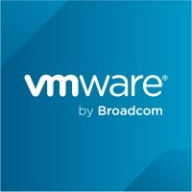

Splunk Observability Cloud and vRealize Network Insight compete in IT monitoring, with Splunk often noted for its comprehensive data analysis and integration capabilities, while vRealize is recognized for its exceptional network visualization strengths.
Features: Splunk Observability Cloud offers features like custom dashboard creation, log search capabilities, and extensive integration with existing IT systems. It provides end-to-end visibility, making it easy to analyze various data streams. vRealize Network Insight is distinguished by its ability to deliver detailed network insights, visualize traffic flows, and analyze network communications for enhanced security and optimization.
Room for Improvement: Splunk could improve its cost efficiency and ease the integration with more third-party solutions while addressing the steep learning curve for new users. vRealize Network Insight could benefit from better integration with non-VMware products and a more intuitive interface for users less familiar with networking concepts.
Ease of Deployment and Customer Service: Splunk Observability Cloud supports multiple deployment environments including public, private, and hybrid clouds. Its customer service is generally praised, though some see room for improvement in support consistency. vRealize Network Insight primarily focuses on on-premises and private cloud deployments, with detailed support documentation that contributes to its responsive and sufficient customer service.
Pricing and ROI: Splunk is perceived as expensive, particularly concerning data volume costs, yet users often recognize a return on investment through productivity gains. vRealize Network Insight also has a high price tag, but its value in network visualization is seen as justifying the expense. Both solutions are considered valuable investments for operational efficiency and downtime reduction.
Using Splunk has saved my organization about 30% of our budget compared to using multiple different monitoring products.
Anyone working in front-end management should recognize the market price to see the true value of end-user monitoring.
I have definitely seen a return on investment with Splunk Observability Cloud, particularly through how fast it has grown and how comfortable other teams are in relying on its outputs for monitoring and observability.
On a scale of 1 to 10, the customer service and technical support deserve a 10.
They have consistently helped us resolve any issues we've encountered.
They often require multiple questions, with five or six emails to get a response.
It's difficult to find necessary documentation, open tickets, and get support.
We are paying too much for technical support from VMware.
We've used the solution across more than 250 people, including engineers.
As we are a growing company transitioning all our applications to the cloud, and with the increasing number of cloud-native applications, Splunk Observability Cloud will help us achieve digital resiliency and reduce our mean time to resolution.
I would rate its scalability a nine out of ten.
I would rate its stability a nine out of ten.
We rarely have problems accessing the dashboard or the page.
Unlike NetScout or regular agents for APM, RUM has many problems during the POC phase because customer environments vary widely.
We are managing that one but usually we have an API connector between our firewall vendor and our VMware NSX.
The out-of-the-box customizable dashboards in Splunk Observability Cloud are very effective in showcasing IT performance to business leaders.
The next release of Splunk Observability Cloud should include a feature that makes it so that when looking at charts and dashboards, and also looking at one environment regardless of the product feature that you're in, APM, infrastructure, RUM, the environment that is chosen in the first location when you sign into Splunk Observability Cloud needs to stay persistent all the way through.
There is room for improvement in the alerting system, which is complicated and has less documentation available.
Broadcom should improve by going back to what was working before, offering the suite of tools that clients actually use, and allowing clients to decide the best options for them.
Splunk is a bit expensive since it charges based on the indexing rate of data.
It is expensive, especially when there are other vendors that offer something similar for much cheaper.
It appears to be expensive compared to competitors.
Broadcom is known for increasing product prices, making them expensive compared to what people used to pay.
Splunk provides advanced notifications of roadblocks in the application, which helps us to improve and avoid impacts during high-volume days.
For troubleshooting, we can detect problems in seconds, which is particularly helpful for digital teams.
It offers unified visibility for logs, metrics, and traces.
One of the biggest problems with VMware NSX is logging, and vRealize Network Insight helps by providing comprehensive logs.
| Product | Market Share (%) |
|---|---|
| Splunk Observability Cloud | 1.8% |
| vRealize Network Insight | 0.5% |
| Other | 97.7% |


| Company Size | Count |
|---|---|
| Small Business | 20 |
| Midsize Enterprise | 10 |
| Large Enterprise | 43 |
| Company Size | Count |
|---|---|
| Small Business | 11 |
| Midsize Enterprise | 9 |
| Large Enterprise | 41 |
Splunk Observability Cloud offers sophisticated log searching, data integration, and customizable dashboards. With rapid deployment and ease of use, this cloud service enhances monitoring capabilities across IT infrastructures for comprehensive end-to-end visibility.
Focused on enhancing performance management and security, Splunk Observability Cloud supports environments through its data visualization and analysis tools. Users appreciate its robust application performance monitoring and troubleshooting insights. However, improvements in integrations, interface customization, scalability, and automation are needed. Users find value in its capabilities for infrastructure and network monitoring, as well as log analytics, albeit cost considerations and better documentation are desired. Enhancements in real-time monitoring and network protection are also noted as areas for development.
What are the key features?In industries, Splunk Observability Cloud is implemented for security management by analyzing logs from detection systems, offering real-time alerts and troubleshooting for cloud-native applications. It is leveraged for machine data analysis, improving infrastructure visibility and supporting network and application performance management efforts.
VMware vRealize Network Insight delivers intelligent operations for software-defined networking and security. It helps customers build an optimized, highly-available and secure network infrastructure across multi-cloud environments. It accelerates micro-segmentation planning and deployment, enables visibility across virtual and physical networks and provides operational views to manage and scale VMware NSX deployments.
We monitor all IT Infrastructure Monitoring reviews to prevent fraudulent reviews and keep review quality high. We do not post reviews by company employees or direct competitors. We validate each review for authenticity via cross-reference with LinkedIn, and personal follow-up with the reviewer when necessary.